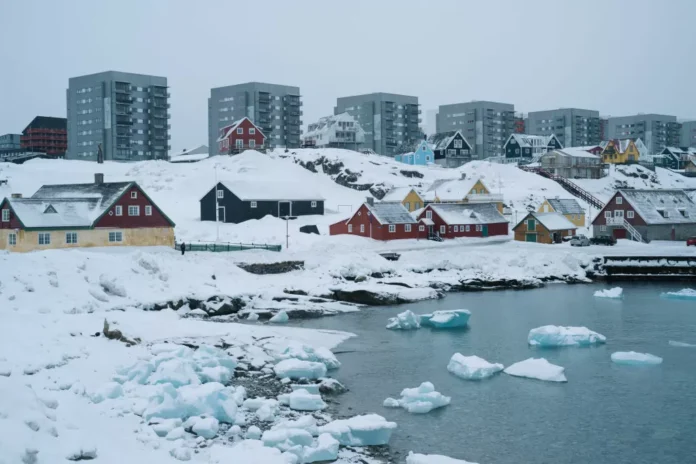Climate change has been a hot topic in recent years, with the increasing global temperatures and its impact on the environment. While many countries are struggling to combat the negative effects of climate change, one nation seems to be benefiting from it – Greenland.
Greenland, the world’s largest island, has long been known for its harsh, icy landscapes and polar bears. However, with the rising temperatures, the island is experiencing significant changes that are opening up new economic and strategic opportunities. But the reality is more complex than it may seem.
The most obvious change in Greenland is the melting of its ice sheet. This has led to the opening of new shipping routes, making the island more accessible and attractive to global trade. With the Arctic sea ice retreating, ships can now easily navigate through the Northwest Passage and the Northern Sea Route, significantly reducing the travel time between Europe and Asia. This has caught the attention of countries like China, who see Greenland as a potential gateway to the Arctic and its abundant natural resources.
In addition to the new shipping routes, the melting ice has also revealed vast reserves of oil, gas, and minerals that were previously inaccessible. This has sparked the interest of international companies, and Greenland’s government has already granted licenses for oil and gas exploration. The island’s strategic location also makes it a valuable site for military bases, as it provides a closer presence to the Arctic region.
All these economic and strategic opportunities may seem like a blessing for Greenland, but the reality is more complicated. The island’s economy heavily relies on fishing and tourism, which are both at risk due to climate change. The melting ice has disrupted the marine ecosystem, affecting the fish population and the livelihoods of local fishermen. The warmer temperatures have also caused the permafrost to thaw, making it difficult for tourists to access certain areas and damaging the infrastructure.
Moreover, the rapid development of industries such as oil and gas could have severe consequences on the environment and the traditional way of life of the indigenous Inuit population. The extraction and transportation of these resources pose a threat to the fragile Arctic ecosystem and could lead to pollution and other environmental hazards. It also raises concerns about the impact on the Inuit culture, which is deeply connected to nature and relies on subsistence hunting and fishing.
The government of Greenland is well aware of these challenges and is taking steps to ensure sustainable development. They have implemented strict regulations for oil and gas exploration to minimize the environmental impact, and they are investing in renewable energy sources to reduce their reliance on fossil fuels. The government is also working closely with the Inuit community to address their concerns and involve them in decision-making processes.
Despite the challenges, there is no denying that climate change has opened up new economic and strategic opportunities for Greenland. However, it is crucial to approach these opportunities with caution and prioritize the well-being of the environment and the local communities. The island’s government must strike a balance between economic growth and sustainable development to ensure a prosperous future for Greenland.
In conclusion, while climate change may have brought some positive changes to Greenland, the reality is more complex than it may seem. The island is facing both opportunities and challenges, and it is essential to address them in a responsible and sustainable manner. With proper management and cooperation, Greenland can harness the benefits of climate change while preserving its unique environment and culture.

